Maintaining your website’s visibility is critical in the ever-evolving world of search engine optimization. One effective way to boost your site’s authority and improve its online presence is through link reclamation.
This process involves fixing lost links that no longer direct back to your site, ensuring you regain the link equity associated with them. Reestablishing these connections increases your site’s authority and improves your search engine rankings, crucial for attracting new visitors and maintaining your existing audience.
Implementing link reclamation strategies can significantly impact your website’s SEO. This approach helps recover valuable backlinks and enhances your site’s domain authority when executed correctly. Through these practices, you ensure that valuable content and resources continue to be recognized by search engines.
Here, we’ll explore step-by-step guidance on optimizing link reclamation and improving your site’s visibility. Following these methods will reinforce your site’s reputation and ensure you capitalize on each authoritative link.
Introduction to Link Reclamation
Link reclamation involves locating and restoring backlinks that once pointed to your website but are no longer functioning. These links become inactive due to content removal, website restructuring, or outdated pages.
Proactively reclaiming these links ensures your site continues benefiting from its previously established value, essential for sustained search engine visibility. Regular audits and proactive management are critical steps in this ongoing process.
Understanding the Value of Links
Links act as the currency of the internet, playing a crucial role in determining search engine rankings and online reputation. Each backlink serves as a vote of confidence in your content’s quality and relevance, transferring valuable link equity to your site. Understanding this, you can capitalize on existing SEO strategies by incorporating internal and external links.
Internal links guide users within your website, facilitating better navigation, while external links enhance your site’s authority and trustworthiness, casting a wider net to capture and retain audience interest.
ALSO READ: How to Choose the Right Car Accident Lawyer
Identifying Broken Links
Identifying broken links is a crucial step in link reclamation. It involves regularly auditing your site for broken or missing links that could hinder your site’s performance. Utilizing tools like SEO auditing software or even manual checks can be instrumental in quickly highlighting issues, making them easier to address efficiently.
Ensuring all links function as intended, you maintain a seamless user experience, which is vital for SEO and enhancing user satisfaction. Monitoring and updating these links is a proactive approach to preserving site health.
Tools for Finding and Fixing Links
Several tools are available for fixing broken links, ranging from plug-ins for content management systems to robust professional software solutions. Notably, Google’s Search Console is a widely used tool that offers valuable insights into your site’s performance.
It helps identify troublesome URLs, allowing you to address issues directly and maintain a proactive stance in your SEO strategy. Leveraging such tools aids significantly in maintaining link integrity, preserving both user experience and the search engine’s trust in your website.
How to Approach Site Owners
Once you have identified broken links, the next step is contacting the site owners. Craft a polite and concise email explaining the problem and providing a corrected link for them to use. When approaching site owners, it’s essential to convey the mutual benefits of fixing the link, emphasizing partnership and cooperation.
Be courteous and clear; the more straightforward your request, the more likely they will respond favorably. Establishing a professional and helpful dialogue resolves the immediate issue and fosters future collaboration opportunities.
Benefits of Effective Link Reclamation
Effective link reclamation reaffirms your site’s credibility and authority. Restored links lead to increased site traffic and improved domain authority over time. Reclaiming these begins with understanding your current link profile and identifying potential.
Historical data and case studies consistently demonstrate a noticeable upward trajectory in website performance metrics following successful link reclamation efforts. This proactive approach to link management ensures your content remains valuable and influential in the vast digital arena.
ALSO READ: Creating Unique Art with Digital Collage
Common Challenges and Solutions
While link reclamation offers numerous benefits, it has its challenges. Unresponsive site owners or outdated contact information can be significant barriers. In such cases, explore alternative communication channels or look into social media and professional networks to make connections.
To encourage cooperation, consider offering value propositions, such as highlighting reciprocal benefits. Adapting your strategies to overcome these obstacles ensures the continued effectiveness of your link reclamation efforts.







